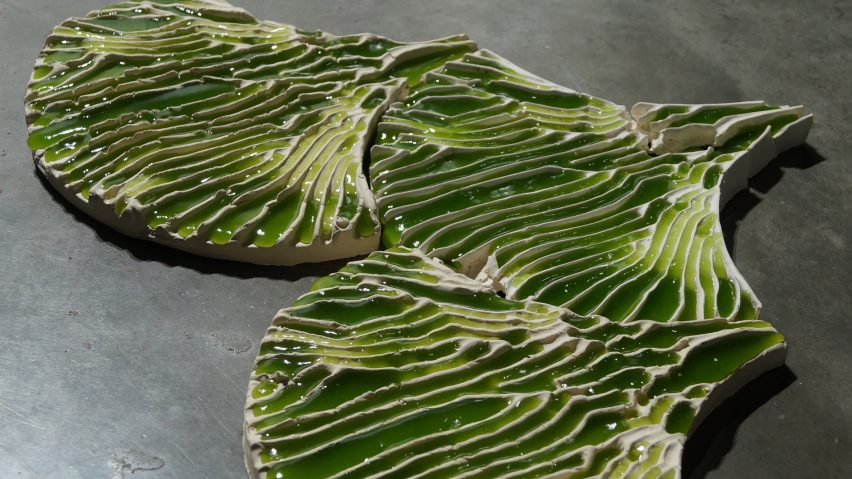
Bio-ID Lab designs DIY algae-infused tiles that can extract toxic dyes from water
The Bio-Integrated Design Lab at the Bartlett School of Architecture has created a modular system of tiles inlaid with algae that can filter toxic chemical dyes and heavy metals out of water.
Called Indus, the tiles are on display in the UK for the first time during the London Design Festival.
Under the theme of Nature/Nurture, they form part of curator Jane Withers' programme for the Brompton Design District, which explores how design can learn from and protect our natural environment.
Indus is designed to be built on site in areas with contaminated water sources, where artisans can pour water over the tiles to purify it.
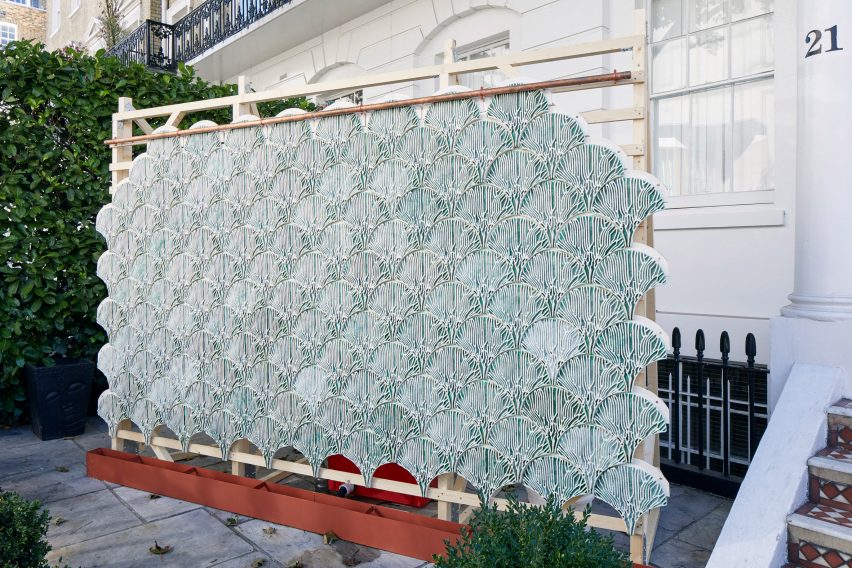
Each tile is made simply by pressing clay – or a similar low-cost, local material – into fan-shaped moulds with a series of "vein-like channels".
These mimic the structure of leaves and their ability to distribute water evenly to every part of a plant.
The ravines are then filled with micro-algae which are suspended within the "biological scaffold" of a seaweed-derived hydrogel. This keeps the algae alive while also being completely recyclable and biodegradable.
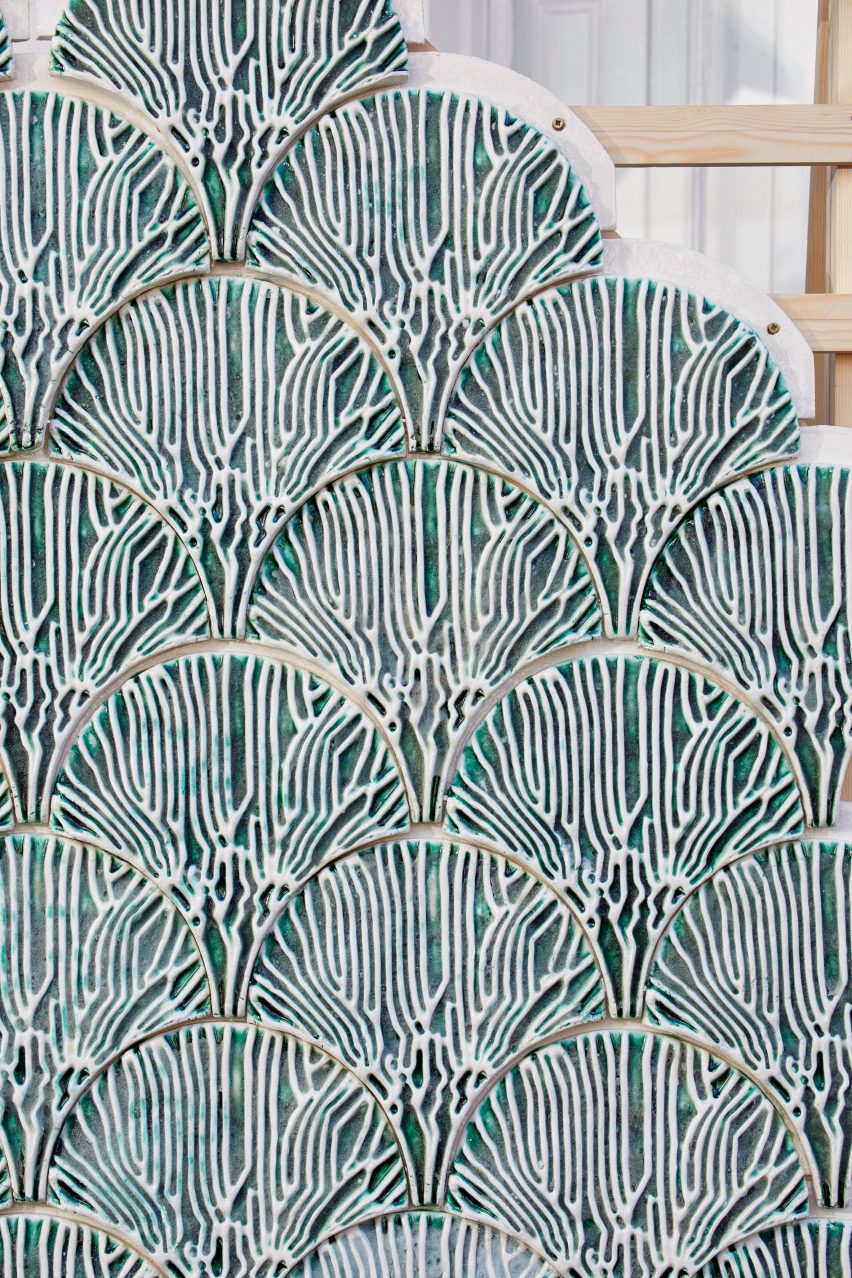
"The materials required to prepare the hydrogel along with the algae cells can be supplied in powdered form," explained the project's lead, Bartlett PhD student Shneel Malik.
"Much like cooking, you can add just the right amount of powder to water in order to prepare the hydrogel for application to the tiles."
Once filled, the tiles are assembled into a wall and water is poured into the system through inlets at the top. It trickles through the tile channels and is collected at the bottom.
As it flows over the channels, the water is subject to a process called bioremediation, in which microorganisms such as algae or fungi are used to consume and break down pollutants in the environment.
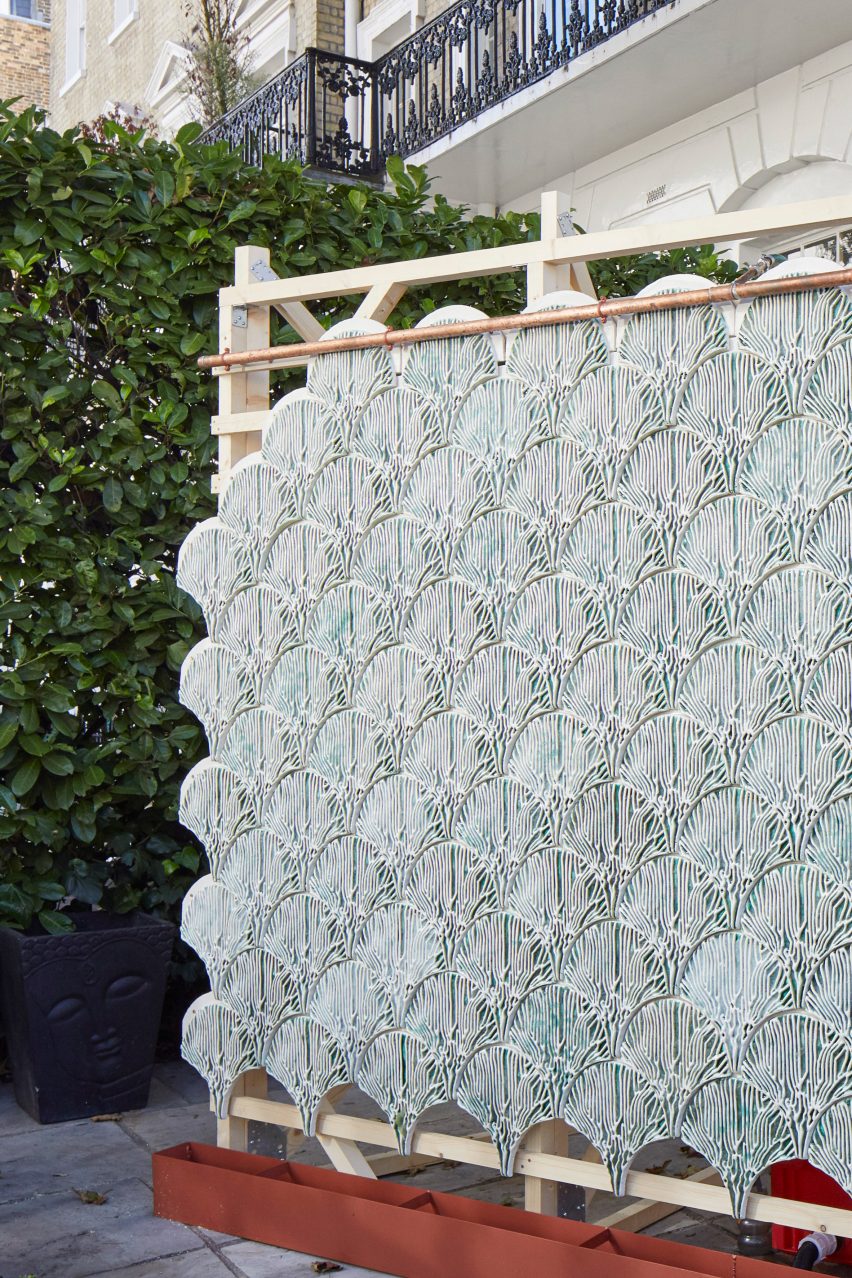
This is a symbiotic relationship, explained Malik: "The algae produce a set of compounds called phytochelatins, which enable them to capture these metals, without which they would be unable to grow."
The compounds remove the pollutants from the water and deposit them within the cell of the algae, where they are stored.
"At some point, the hydrogel will become saturated and will need to be replaced," she told Dezeen. "The exact timing depends on the amount of pollutants in the water, but we have made several formulations that are stable for months."
Once they are saturated, the algae can be replaced with a fresh batch. The base tiles, however, can be continually reused and re-filled.
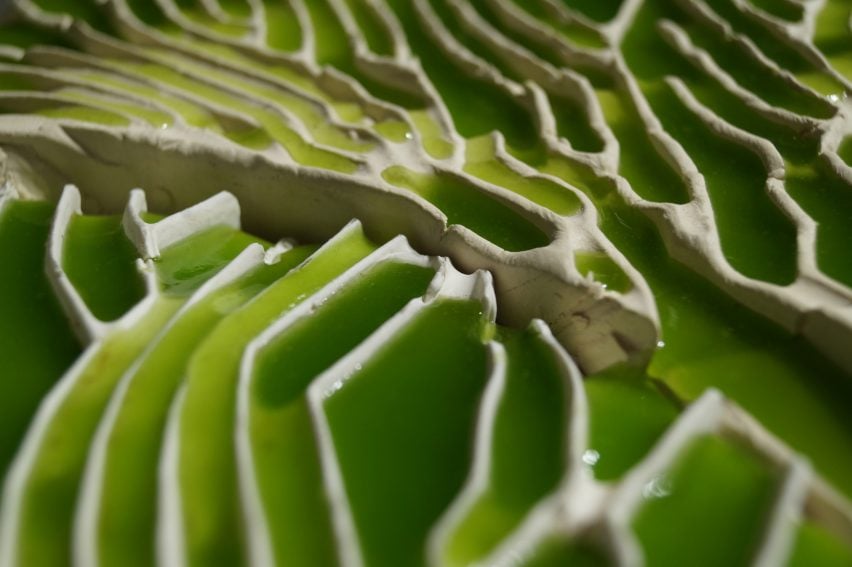
Each modular tile unit is attached to the next through half-lap joints, and so can be individually removed without taking apart the entire system. This is crucial, as it allows for easy maintenance and adaptation to the constraints of the local built environment.
The particular size of the tile wall can be customised to suit the available space and the distance the water must travel to be fully purified.
"Through our site visits, we realised that the artisan workers had no space available for westernised high-tech water treatment solutions," said Malik.
"Neither did they have the economic capacity to get additional support. So we needed a system that was spatially compatible and could be constructed and maintained by them."
Hence the idea of moulding the tiles via templates which, once the project is rolled out, would be custom-made by the Bio-ID Lab with a different system of channels to correspond to different contaminants.
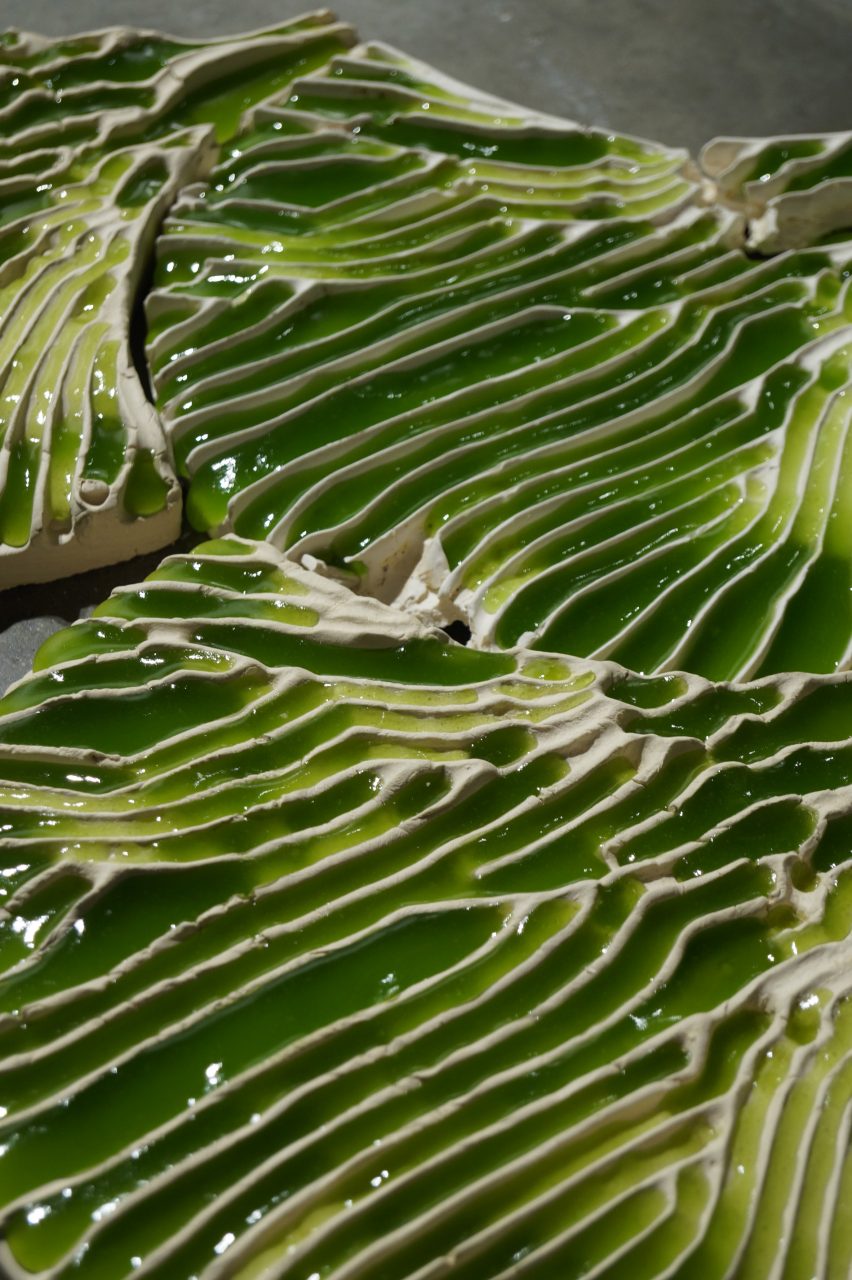
Future milestones for the project include performance tests in the UK and then, Malik hopes, a pilot project on-site in India, where an estimated 80 per cent of surface and ground water is polluted.
While in the current iteration of Indus, pollutants are merely captured, she has ambitions to expand the system to include a second stage, in which the hydrogel is processed to remove the heavy metal nanoparticles from the algae cells.
In an "incentive-based closed loop system", these valuable raw materials could then be sold on to high tech companies, which use them within their own manufacturing processes.
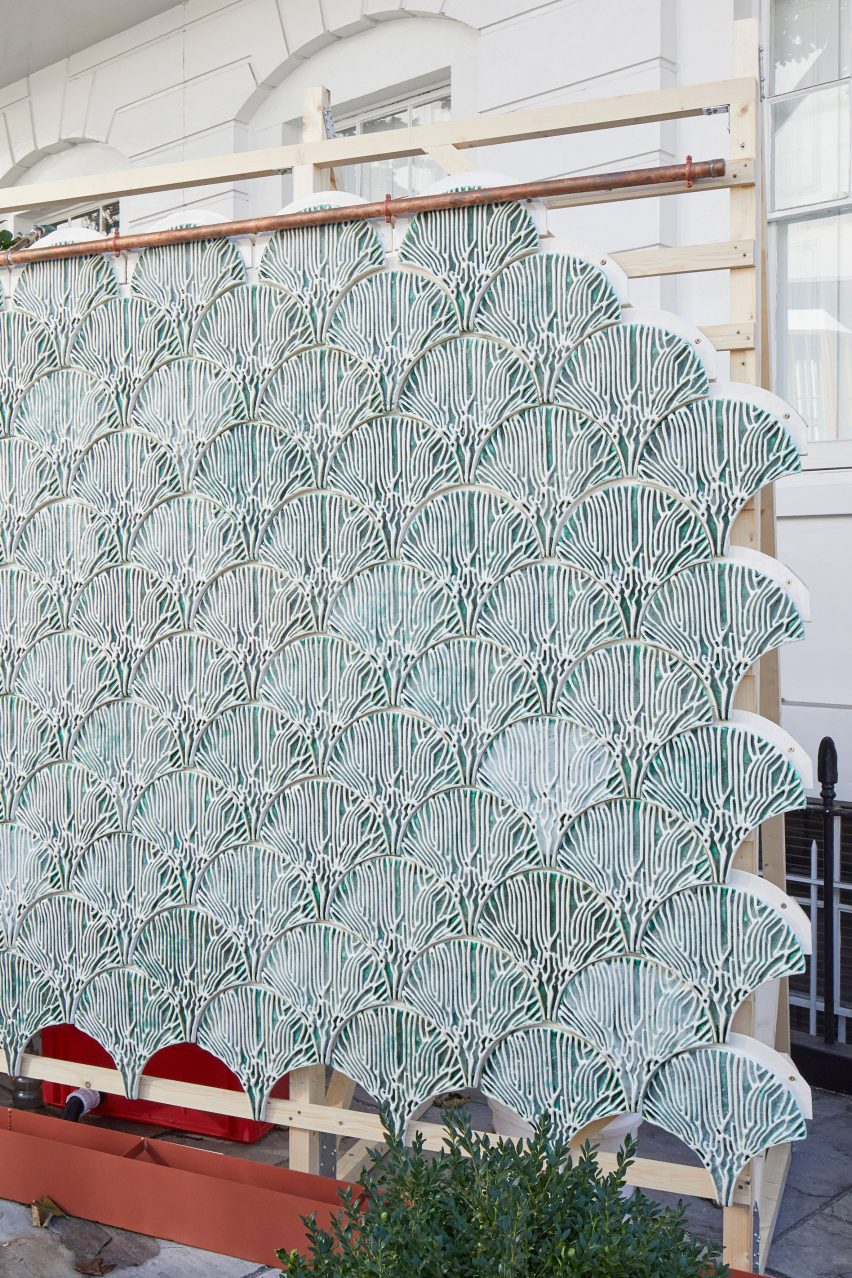
Indus is one of several works on show in and around the V&A for London Design Festival 2019 which runs until the 22 September.
More than 400 installations and exhibitions will be on show across the city as part of the event, including Kengo Kuma's bamboo nest and an exhibition of sustainable, animal-centric wildlife shelters.
Other recent projects that use algae as a sustainable biomaterial include a fully compostable T-shirt by start-up Vollebak and a single-use plastic alternative by Chilean designer Margarita Talep.
Photography is by Andy Stagg.